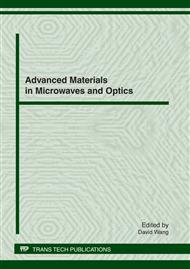p.269
p.273
p.278
p.283
p.287
p.291
p.297
p.301
p.311
Experimental Study on Magnetorheological (MR) Jet Polishing of Mould Free Surface
Abstract:
This paper attempts to use a kind of smart material-magnetorheological fluid and magnetorheological jet polishing method to polish mould. Use self-preparation MR fluid conduct experiments on MR jet polishing setup which developed by ourselves. After polished by MR jet, surface roughness of the mould improved from 812nm to 88nm. The result shows that experiment and its setup are feasible.
Info:
Periodical:
Pages:
287-290
Citation:
Online since:
January 2012
Authors:
Keywords:
Price:
Сopyright:
© 2012 Trans Tech Publications Ltd. All Rights Reserved
Share:
Citation:


